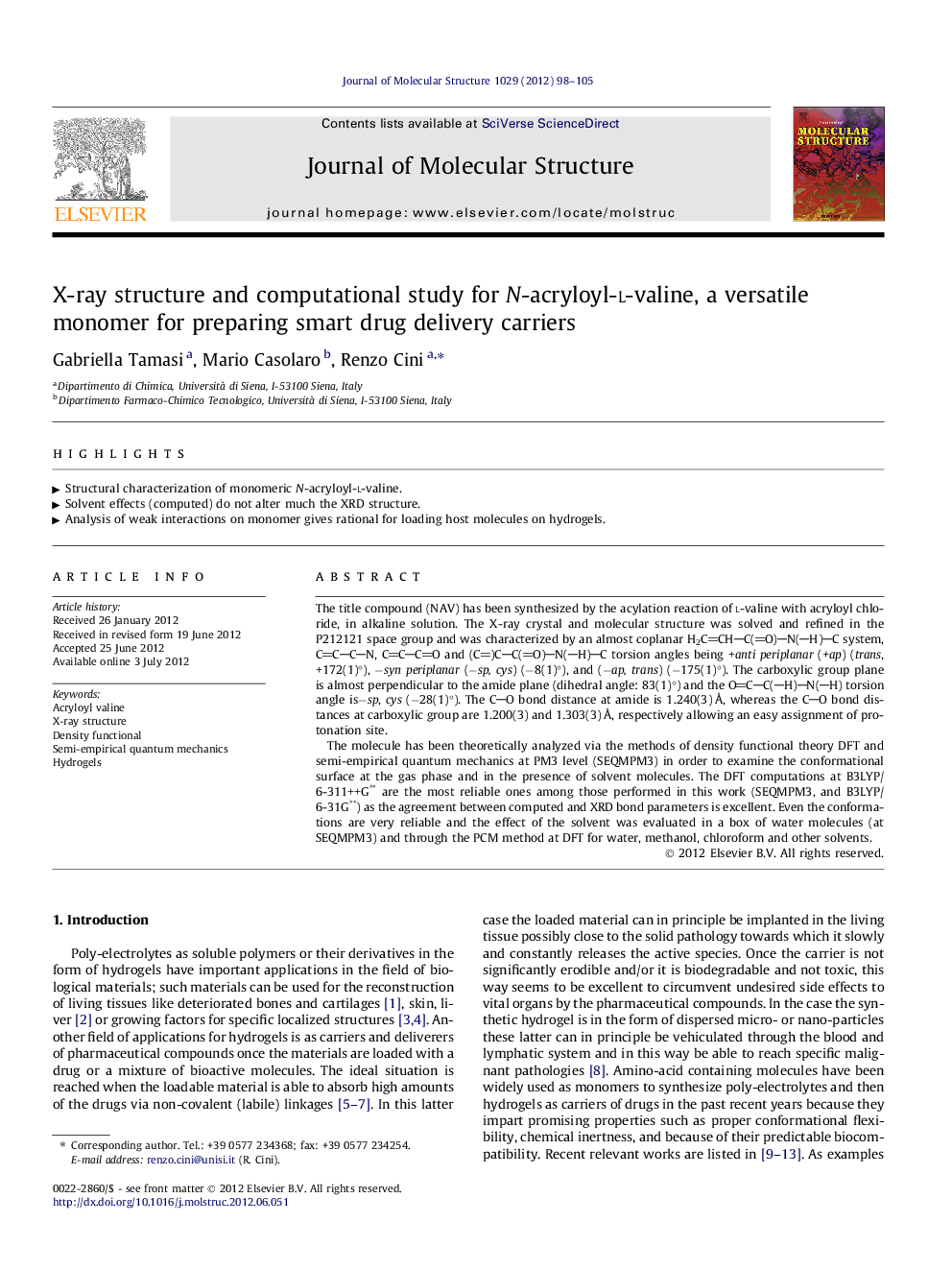| Article ID | Journal | Published Year | Pages | File Type |
|---|---|---|---|---|
| 1408961 | Journal of Molecular Structure | 2012 | 8 Pages |
The title compound (NAV) has been synthesized by the acylation reaction of l-valine with acryloyl chloride, in alkaline solution. The X-ray crystal and molecular structure was solved and refined in the P212121 space group and was characterized by an almost coplanar H2CCHC(O)N(H)C system, CCCN, CCCO and (C)CC(O)N(H)C torsion angles being +anti periplanar (+ap) (trans, +172(1)°), −syn periplanar (−sp, cys) (−8(1)°), and (−ap, trans) (−175(1)°). The carboxylic group plane is almost perpendicular to the amide plane (dihedral angle: 83(1)°) and the OCC(H)N(H) torsion angle is−sp, cys (−28(1)°). The CO bond distance at amide is 1.240(3) Å, whereas the CO bond distances at carboxylic group are 1.200(3) and 1.303(3) Å, respectively allowing an easy assignment of protonation site.The molecule has been theoretically analyzed via the methods of density functional theory DFT and semi-empirical quantum mechanics at PM3 level (SEQMPM3) in order to examine the conformational surface at the gas phase and in the presence of solvent molecules. The DFT computations at B3LYP/6-311++G** are the most reliable ones among those performed in this work (SEQMPM3, and B3LYP/6-31G**) as the agreement between computed and XRD bond parameters is excellent. Even the conformations are very reliable and the effect of the solvent was evaluated in a box of water molecules (at SEQMPM3) and through the PCM method at DFT for water, methanol, chloroform and other solvents.
► Structural characterization of monomeric N-acryloyl-l-valine. ► Solvent effects (computed) do not alter much the XRD structure. ► Analysis of weak interactions on monomer gives rational for loading host molecules on hydrogels.
